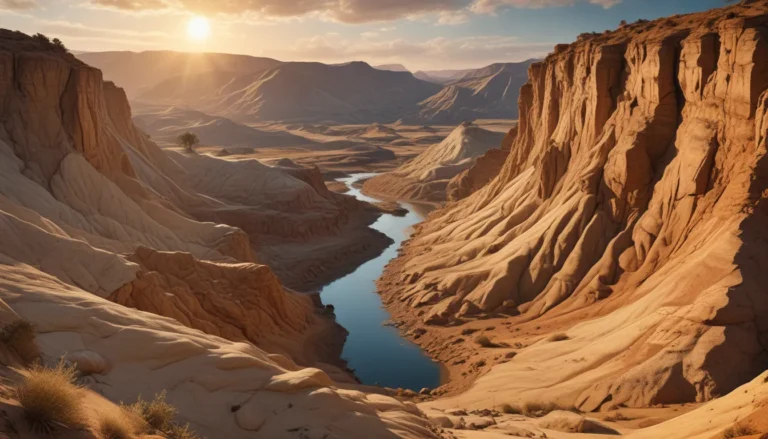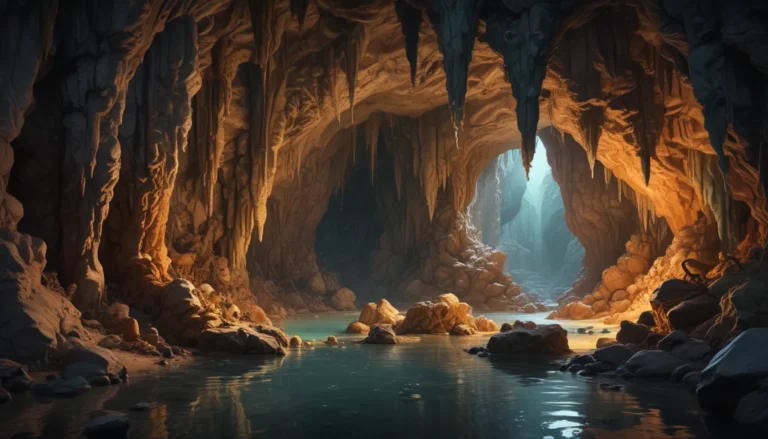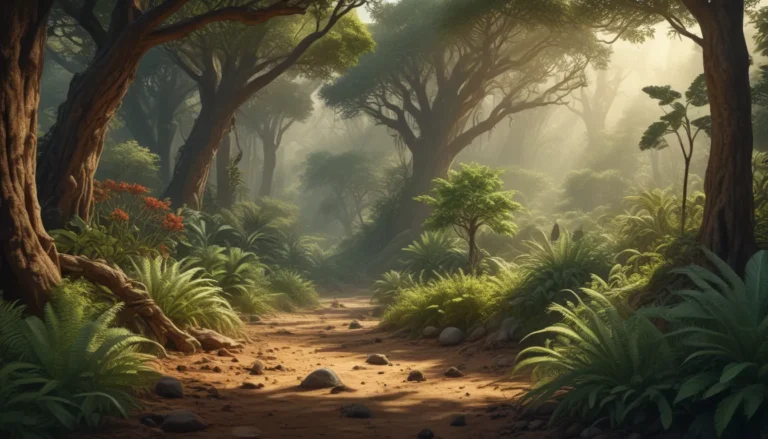A Note About Images: The images used in our articles are for illustration purposes only and may not exactly match the content. They are meant to engage readers, but the text should be relied upon for accurate information.
Are you ready to delve into the mysteries and marvels surrounding Uluru, the iconic sandstone formation that graces the heart of the Australian desert? Beyond its stunning appearance, Uluru holds a profound spiritual significance rooted in Aboriginal culture and history. Join us on a captivating journey as we explore 25 fascinating facts about Uluru that will leave you in awe of this natural wonder.
Unveiling Uluru: A Symbol of Spiritual Splendor
Uluru, known as Ayers Rock, stands majestically as a colossal sandstone monolith in Australia’s renowned Red Centre. Embraced by the indigenous Anangu people, this sacred landmark exudes a deep spiritual aura that transcends mere physical beauty. The vibrant red hues that adorn Uluru at sunrise and sunset, coupled with ancient indigenous rock art, create a mesmerizing spectacle for all who behold it.
Unraveling the Spiritual Depths of Uluru
-
Uluru holds profound spiritual significance for the Anangu, the traditional custodians of the land. According to their belief, Uluru was created by ancestral beings during the Dreamtime, shaping its role as a cornerstone of their cultural and spiritual heritage.
-
Embark on guided walks led by knowledgeable Anangu guides to unravel the ancient tales and significance of various sites surrounding Uluru. These stories are an integral part of the Anangu’s oral tradition, serving as a timeless link to their ancestral legacy.
The Geological Splendor of Uluru
-
Contrary to popular belief, Uluru is not merely an iceberg-like structure with most of its mass concealed underground. In reality, it resembles an inverted iceberg, with the majority of its mass visible above the earth’s surface.
-
With an estimated age of approximately 600 million years, Uluru stands as a silent witness to a myriad of historical epochs. Composed of arkose, a coarse-grained sandstone infused with feldspar, Uluru boasts its characteristic red hue that undergoes a breathtaking transformation at sunrise and sunset, bathed in vibrant red and orange hues under the sun’s ethereal glow.
Upholding Tradition: The Ban on Climbing Uluru
-
In a significant move to honor the traditional laws and culture of the Anangu people, climbing Uluru was officially prohibited in October 2019. Prior to the ban, tourists frequently disregarded the Anangu’s pleas to refrain from climbing the rock.
-
While the decision to ban climbing Uluru stirred both support and controversy, it marked a crucial step towards acknowledging indigenous rights and safeguarding the cultural sanctity of this sacred site.
Flourishing Flora and Fauna of Uluru
-
Despite its arid environment, Uluru cradles a surprising diversity of flora and fauna within its embrace. Over 400 plant species, birds, and animals thrive within the Uluru-Kata Tjuta National Park.
-
Among these inhabitants are rare and endangered species like the black-flanked rock-wallaby, finding solace within the rocky habitats of the park.
The Kaleidoscopic Symphony of Uluru’s Colors
-
Witness the captivating metamorphosis of Uluru’s hues, a spectacle that unfolds throughout the day. From the soft luminescence of dawn to the fiery reds of sunset, and even the ethereal purples that emerge during rainfall, Uluru embodies a kaleidoscope of shades that captivate the soul.
-
This enchanting phenomenon is attributed to the interplay of the sun’s rays reflecting and refracting off the sandstone surface, influenced by the time of day and prevailing atmospheric conditions.
Celestial Wonders: Uluru and Astronomy
-
Beneath the clear skies that grace Uluru, a dazzling vista of stars awaits avid stargazers. The Anangu people possess a profound understanding of the celestial realm, which plays an integral role in their navigation, storytelling, and seasonal calendars.
-
Behold the splendor of astronomical phenomena such as the Milky Way and constellations, vividly visible from the vantage point of Uluru, offering a celestial spectacle that transcends earthly realms.
Uluru’s Cultural Tapestry in Popular Imagery
-
Uluru’s enduring allure has graced the screens of films, pages of books, and strokes of artworks, solidifying its status as a symbol of Australia’s natural splendor and cultural richness.
-
Its iconic presence has ignited dialogues surrounding the representation of indigenous cultures and the imperative to safeguard sacred sites of cultural significance.
Charting the Future Path of Uluru
-
Endeavors to safeguard Uluru and its environs revolve around striking a delicate balance between tourism and the preservation of the site’s cultural and environmental sanctity.
-
Sustainable tourism initiatives and educational campaigns strive to cultivate a deeper understanding and reverence for Uluru’s intrinsic significance among visitors.
-
The collaborative partnership between the Australian government and the Anangu people remains pivotal in the management and conservation of Uluru.
-
Uluru serves as a poignant exemplar of how sacred sites can be safeguarded and respected in an era marked by heightened awareness of indigenous rights and environmental conservation.
-
With the climbing ban in place, future generations will engage with Uluru in a manner that reveres its cultural significance and natural allure, ensuring its legacy endures across the annals of time.
-
Uluru embodies not merely a geological spectacle but an enduring bond between people, land, and ancestors, underscoring the vitality of preserving cultural heritage and natural marvels.
-
Nurturing the insights gleaned from Uluru’s narrative and the ongoing initiatives to shield it can serve as guiding beacons in the custodianship of other priceless sites across the globe.
-
The stewardship of Uluru by the Anangu people offers a compelling blueprint for environmental conservation and cultural preservation, underscoring the intrinsic value of incorporating indigenous knowledge and traditions.
-
The ban on climbing Uluru has ignited a broader discourse on responsible tourism practices vis-à-vis sacred sites worldwide, emphasizing the need for travel habits that honor local cultures and environments.
-
Uluru’s narrative epitomizes the transformative power of unity and respect in fostering positive change, showcasing the transcendent outcomes achievable when communities unite to honor each other’s values and beliefs.
A Lasting Glimpse into Uluru’s Splendor
Uluru transcends its identity as a mere sandstone monolith, emerging as a beacon of cultural reverence and natural grandeur in the heart of Australia. Through these 25 enthralling facts, we’ve ventured beyond its physical facade to unearth the tales of ancient traditions, diverse wildlife, and geological marvels that define Uluru’s essence. The significance of Uluru to the Anangu people serves as a poignant reminder of the profound interplay between land and culture, echoing a timeless chord that resonates through the annals of history. As we draw to a close, let us carry forward this newfound understanding and admiration of Uluru, ensuring its legacy endures for generations to come.
Frequently Asked Questions
What exactly is Uluru?
Uluru, also known as Ayers Rock, is a colossal sandstone monolith located in the heart of Australia’s arid “Red Centre.” Embraced by the indigenous Anangu people, this sacred site is renowned for its rich red hue and ancient cultural significance.
How tall is Uluru?
Uluru stands impressively tall at approximately 348 meters (1,142 feet), rising dramatically from the flat plains that envelop its base. With a circumference spanning about 9.4 kilometers (5.8 miles), Uluru commands a commanding presence in the Australian desert.
Can you climb Uluru?
Climbing Uluru was officially prohibited in October 2019 out of respect for the Anangu people, for whom Uluru holds profound spiritual value. Visitors are encouraged to appreciate the beauty of Uluru from ground level and immerse themselves in the cultural and environmental facets offered within the site.
Why does Uluru change color?
Uluru is renowned for its color-changing displays, particularly at sunrise and sunset, transitioning from somber grays to vibrant reds, purples, and oranges. This remarkable phenomenon is attributed to the atmospheric effects of the sun’s rays on the rock’s surface, creating a mesmerizing kaleidoscope of hues.
What wildlife can be found around Uluru?
The area surrounding Uluru teems with diverse Australian wildlife, including kangaroos, dingoes, and an array of bird species. The varied habitats within the Uluru-Kata Tjuta National Park provide a haven for these creatures, offering a sanctuary within the desert milieu.
Are there any legends associated with Uluru?
Uluru is steeped in Aboriginal legends and is regarded as a deeply spiritual site. The landscape is intertwined with stories of ancestral beings from the Dreamtime, a central tenet of Anangu culture and spirituality that underscores Uluru’s sacred essence.
How can visitors respectfully enjoy Uluru?
Visitors can demonstrate respect by refraining from climbing Uluru and adhering to the guidelines set by the park authorities. Engaging in cultural tours, exploring the base of the rock, and visiting the cultural center to delve into Anangu traditions are wonderful ways to honor and appreciate Uluru respectfully.
Embracing Authenticity and Reliability
At the heart of our mission lies a firm commitment to delivering engaging and trustworthy content that resonates with our diverse community of readers. Each fact shared on our platform is a testament to the invaluable contributions of individuals like you, enriching our repository with a breadth of insights and knowledge. Our dedicated editors rigorously scrutinize each submission, ensuring that the information we provide is not only captivating but also grounded in authenticity. Trust in our unwavering dedication to upholding the highest standards of quality and integrity as you embark on a journey of discovery and exploration with us.






